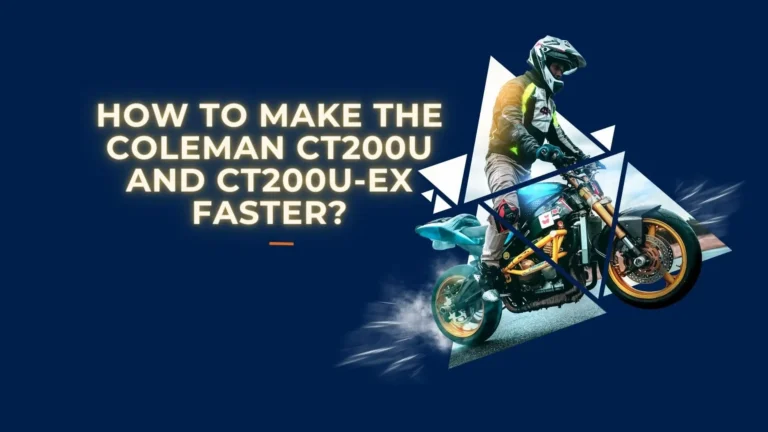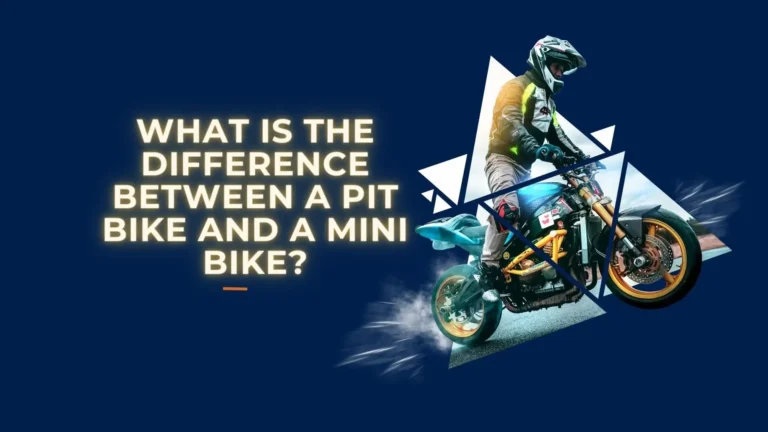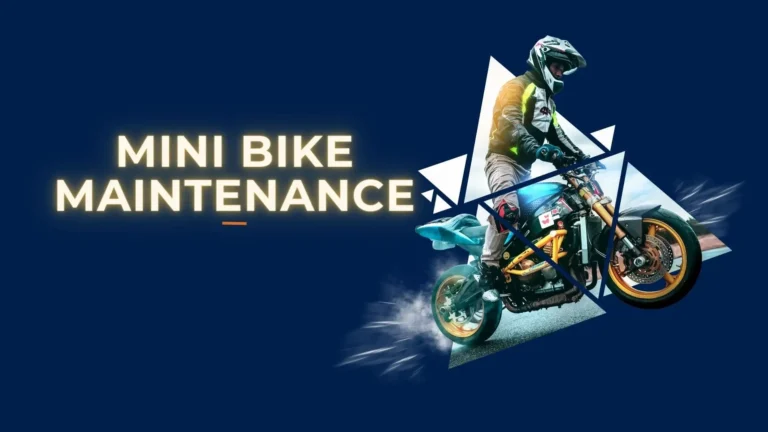Why Are Baja Mini Bikes Discontinued?
Baja mini bikes were discontinued due to recurring safety issues that led to a loss of consumer confidence, financial pressures from fines and lawsuits, and an inability to compete as the mini bike market evolved. Stricter regulations and waning demand for gas-powered mini bikes also played a role.
Baja mini bikes were popular but had problems. Safety issues caused injuries and recalls.
- Baja mini bikes were affordable and fun in the 1990s and 2000s. Many people liked them.
- But in the mid-2000s issues started happening. The mini bikes had major safety defects. This led to injuries, recalls and lawsuits.
- Baja paid large fines. Their reputation declined. Other brands like Honda and Yamaha competed more.
- By the mid 2010s, Baja discontinued the mini bikes. The safety issues, fines, and competition were too much.
This article examines why Baja had to stop selling mini bikes. We’ll see the recalls for safety were a big factor. Declining customer trust and more competition played roles too.
Read on to learn how the specific safety hazards led to an alarming number of injuries and recalls. Find out how massive fines from regulators and lawsuits delivered a financial blow as well.
See how Baja failed to rebuild consumer confidence. The article outlines all the key factors in the downfall of these once-popular models.
Key Takeaways
- Recurring safety defects in Baja mini bikes led to multiple recalls and injuries, severely damaging the company’s reputation
- Large fines from regulators and expensive lawsuits over safety issues delivered a major financial blow
- Baja was unable to rebuild consumer confidence after the string of recalls and accidents
- Increased competition from bigger brands with better reputations made the market much more difficult
- Stricter regulations and shifting consumer preferences away from gas-powered mini bikes added further challenges
- The combination of reputational damage, financial pressure, loss of consumer trust, and market forces ultimately led Baja to discontinue its mini bike models
Safety Issues Led to Injuries and Recalls
Baja mini bikes had safety problems. These caused crashes and injuries.
- A major problem was front fork separation. This made the front wheel fall off when riding. It caused many serious accidents.
- Unintended acceleration was also an issue. This made the bikes unsafe, especially for kids. Many riders got hurt.
- Because of the injury reports, Baja had to do recalls. There was one recall in 2013 for 13 front fork problems. Another recall was in 2015 for 22 more fork separation issues.
- The recalls were necessary to fix the safety defects. But they showed the bikes had bad design problems. This damaged Baja’s reputation badly. People lost trust in the safety of Baja mini bikes.
Fines and Lawsuits Added Financial Pressure
The safety issues and recalls put Baja under more legal scrutiny as well. After the recalls, Baja paid a record $4.3 million civil penalty in 2014. This fine was from the Consumer Product Safety Commission (CPSC).
The CPSC filed a complaint against Baja related to its defective and dangerous products. The $4.3 million penalty settled that complaint. This massive fine created major financial pressure on Baja at a difficult time.
On top of the civil penalty, Baja faced additional lawsuits from injured customers. These lawsuits cost significant money in legal fees and potential settlements.
The combination of recalls, injuries, lawsuits and fines put immense financial strain on Baja. This made it very hard to continue investing and innovating in the mini bike business. The fines and legal pressure delivered a major blow when Baja was already struggling with its reputation.
Loss of Consumer Confidence
The safety issues and recalls also took a major toll on consumer perception of the Baja brand. As problems mounted, customers lost confidence in the safety and quality of Baja mini bikes.
According to consumer reports, the recurring mechanical defects caused many customers to view Baja products as poorly made and dangerous. Families no longer trusted the brand to keep kids safe.
This erosion of consumer trust severely impacted Baja’s sales and revenue. Their once devoted customer base turned away from the brand in droves.
Without consumer confidence, Baja found it nearly impossible to maintain strong sales. Their reputation declined significantly across the 2000s.
It became very difficult for Baja to rebuild that lost trust and loyalty after the string of high-profile recalls and injuries. People simply lost faith in the safety of the company’s mini bikes. This lack of confidence was a primary factor in Baja’s downfall.
Growing Competition in Mini Bike Market
As Baja struggled, competition in the mini bike market was heating up. Major brands like Honda, Kawasaki and Yamaha began releasing their own mini bike models to compete with Baja.
These bigger companies offered strong brand recognition and reputation. Their entrance into mini bikes made the market much more challenging.
Additionally, stricter federal and state regulations increased manufacturing and compliance costs for companies in the space. For a small company like Baja, keeping up with emissions and safety regulations was difficult.
At the same time, overall consumer demand for gas-powered mini bikes began declining. As electric and off-road models gained popularity, traditional mini bike sales dropped.
These shifting market forces and intensifying competition contributed to the business becoming less viable for a brand like Baja. The mini bike segment was evolving quickly and declining.
Alternatives for Consumers
When Baja discontinued its mini bikes, it left a gap in the market. However, consumers still had excellent alternatives to choose from.
The major brands that had entered the space, like Honda and Yamaha, filled the void left by Baja nicely. These companies offered great options with trusted quality.
In addition, new segments like electric mini bikes and off-road mini bikes were rising fast. These provided fantastic modern alternatives to traditional gas mini bikes.
Consumers today have many high-performing and safe mini bike options to fit different needs and preferences. The market continues to evolve with innovative products
Conclusion
Baja mini bikes stopped being sold. Safety issues were a big reason why. The main reasons Baja failed:
- Dangerous defects caused crashes
- Baja had to do recalls
- People did not trust Baja was safe
- Other brands competed more
- Fewer people wanted gas mini bikes
Baja might have survived if they fixed the safety issues earlier. But the problems got too big.
Other brands still make good mini bikes. New electric and off-road mini bikes are popular now.
The mini bike market is evolving. But Baja is gone because they lost consumer trust.
In the end, Baja’s downfall was preventable. If they built safer bikes, customers would have stayed loyal. But major safety problems ruined the company’s reputation.








